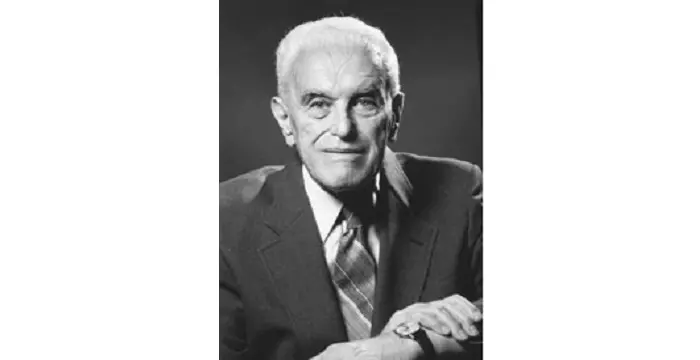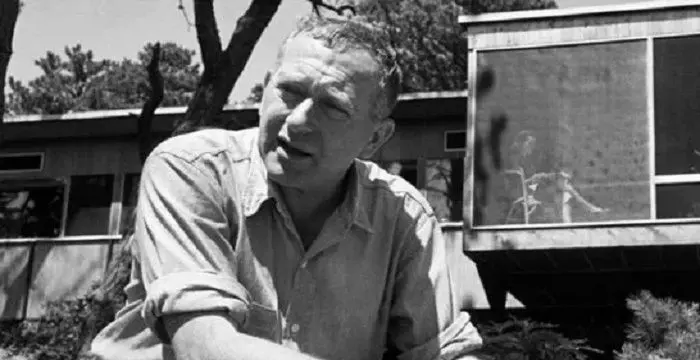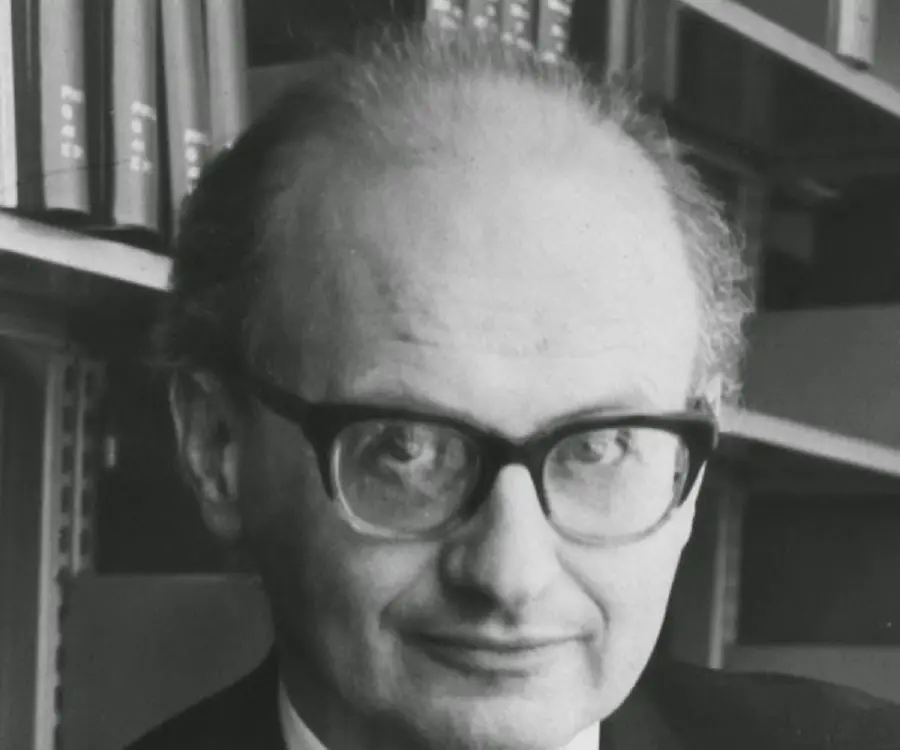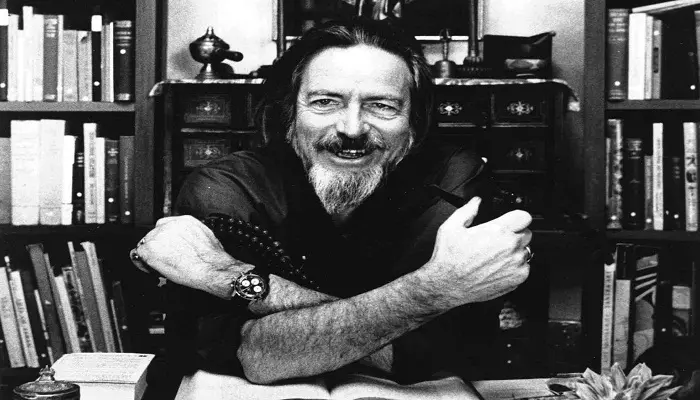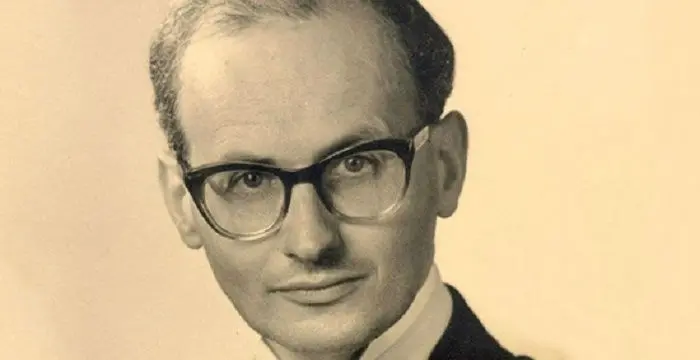
Imre Lakatos - Hungarian Men, Family and Facts
Imre Lakatos's Personal Details
Imre Lakatos was a distinguished Hungarian philosopher best known for his contributions to the philosophy of science and mathematics
| Information | Detail |
|---|---|
| Birthday | November 9, 1922 |
| Died on | February 2, 1974 |
| Nationality | Hungarian |
| Famous | Intellectuals & Academics, Philosophers, Hungarian Men |
| Universities |
|
| Birth Place | Debrecen |
| Religion | Judaism |
| Gender | Male |
| Sun Sign | Scorpio |
| Born in | Debrecen |
| Famous as | Philosopher |
| Died at Age | 51 |
// Famous Hungarian Men
John C Harsanyi
Read on to know the profile, career, important works, contributions and timeline of the famous American economist and Nobel Laureate, John C Harsanyi.
Erno Rubik
The famous inventor and educationist, Erno Rubik is known world-wide for his invention the ‘Rubik’s Cube’. To know more about the childhood, profile, timeline and career of this famous architect-inventor read on.
Marcel Breuer
Marcel Lajos Breuer was a world famous modernist architect and designer considered as one of the most prominent proponents of International Style. This biography profiles his childhood, life, career, achievements and timeline.
Imre Lakatos's photo
Who is Imre Lakatos?
Imre Lakatos was a Jewish-Hungarian philosopher who grew popular for his contributions to the philosophy of science and philosophy of mathematics. He changed his name and took upon the surname ‘Lakatos’ after fearing the German Nazi invasion of Hungary, which claimed the lives of millions, including his mother and grandmother. Through his newly adopted name, he completed his education and secured doctorate from Hungary and England. As an active communist in the World War II, he was imprisoned on charges of revisionism for three years, after which he started his research on mathematics, thereby becoming a philosopher eventually. Among his numerous works in science and mathematics, the most notable are his introduction of a scientific ‘research programme’ and his thesis on the fallibility of mathematics, emphasizing on its proofs and refutations, while working at the prestigious London School of Economics. He translated a number of mathematics books into Hungarian and wrote several books on the philosophy of science and mathematics during his entire life. Some of his best-known works include ‘Proofs and Refutations’, ‘Cauchy and the Continuum: The Significance of Non-Standard Analysis’, and ‘Criticism and the Methodology of Scientific Research Programmes’
// Famous Intellectuals & Academics
Bertil Gotthard Ohlin
Bertil Gotthard Ohlin was a famous Swedish economist. This biography profiles his childhood, family life & achievements.
Emily Greene Balch
Emily Greene Balch was an American economist, sociologist and pacifist who won the 1946 Nobel Peace Prize. This biography of Emily Greene Balch provides detailed information about her childhood, life, achievements, works & timeline.
Martin Buber
One of the greatest philosophers to have ever walked on earth, Martin Buber contributions to philosophy is a long-standing one. Explore all about his profile, childhood, life and timeline here.
Childhood & Early Life
Imre Lakatos was born as Imre Lipschitz on November 9, 1922, in Debrecen, Hungary, into a Jewish family.
His mother and grandmother died at the Auschwitz concentration camp in the German Nazi invasion during World War II.
He completed his education from the University of Debrecen in 1944, graduating in mathematics, physics and philosophy.
He received his PhD from Debrecen University in 1948. In 1949, he studied briefly at the Moscow State University under Sofya Yanovskaya. Later, he obtained a doctorate in philosophy from the University of Cambridge in 1961.
In order to avoid the Nazi discrimination, he changed his surname to ‘Molnar’ and later, took upon ‘Lakatos’ (Locksmith) as his last name, inspired by Hungarian general Geza Lakatos, and became Imre Lakatos.
Career
He was as an active communist during World War II and took up work in the Hungarian Ministry of Education as a senior official in 1947, after the war ended.
He landed himself in political trouble in 1950 since he didn’t agree to follow Russian orders without a valid reason and hence, was arrested on charges of revisionism and imprisoned for three years at a Stalinist prison.
He resumed his studies upon his release in 1953 and took up mathematical research, wherein he started translating mathematics books into Hungarian, including George Polya’s ‘How to Solve It’.
During the 1956 Hungarian Revolution, he left Hungary and traveled to Vienna and finally settled down in Great Britain for the rest of his life.
In 1960, he was hired at the London School of Economics (LSE) as an assistant lecturer in the Department of Philosophy, Logic and Scientific Method, where he wrote extensively on the philosophy of science and philosophy of mathematics.
While studying at Cambridge, he compiled a doctoral thesis ‘Essays in the Logic of Mathematical Discovery’, which was published in four parts as ‘Proofs and Refutations’ in ‘The British Journal for the Philosophy of Science’ in 1963-64.
With an intention to improve his work on ‘Proofs and Refutations’, he refused to publish it as a book. It was released after his death as ‘Proofs and Refutations: The Logic of Mathematical Discovery’ in 1976.
He is credited for authoring various papers on the philosophy of mathematics, after which he switched to writing on the philosophy of science, at large.
He never failed to support his arguments with historical case studies, which is evident from his famous article, ‘Cauchy and the Continuum: The Significance of Non-Standard Analysis’.
He taught at LSE for 14 years and served as the editor of the renowned ‘The British Journal for the Philosophy of Science’ from 1971, till his sudden death in 1974.
Major Works
He tried to prove the Euler-Descartes theorem: V – E + F = 2 (i.e. V=Vertices, E=Edges, F=Faces) in his 1961 doctoral thesis, as a fictional conversation between a teacher and students in a mathematics class.
His major contribution in the philosophy of science was the idea of a scientific ‘research programme’, where he attempted to create a synthesis of Thomas Kuhn’s model of scientific theory change and Karl Popper’s falsificationism.
He devised a research programme consisting of ‘hard core’, emphasizing on evaluating a research program as ‘progressive’ or ‘degenerative’, instead of analyzing whether the hypothesis is true or false.
Personal Life & Legacy
He died unexpectedly on February 2, 1974, after suffering a heart attack, at the age of 51, thus leaving several of his projects in the philosophy of mathematics and science incomplete.
A number of his influential papers on the philosophy of science were published posthumously in two books, ‘Lakatos 1978s’ and ‘Lakatos 1978b’, by his two former students - Gregory Currie and John Worrall.
In 1978, his papers, previously published in several scholarly journals, were compiled and released posthumously as ‘Philosophical Papers’.
The London School of Economics introduced the Lakatos Award in 1986 in his memory, which is given to candidates making exceptional contributions to the philosophy of science.
// Famous Philosophers
Martin Buber
One of the greatest philosophers to have ever walked on earth, Martin Buber contributions to philosophy is a long-standing one. Explore all about his profile, childhood, life and timeline here.
Lao Tzu (Laozi)
Lao Tzu was a legendary Chinese philosopher who wrote the important “Daodejing”. This biography profiles his childhood, life, career, achievements and timeline.
Alan Watts
Alan Watts was a famous British philosopher known for his Zen teachings and interpretations of Eastern philosophy. Read more about this great philosopher in the following article.
Imre Lakatos biography timelines
- // 9th Nov 1922Imre Lakatos was born as Imre Lipschitz on November 9, 1922, in Debrecen, Hungary, into a Jewish family.
- // 1944He completed his education from the University of Debrecen in 1944, graduating in mathematics, physics and philosophy.
- // 1947He was as an active communist during World War II and took up work in the Hungarian Ministry of Education as a senior official in 1947, after the war ended.
- // 1948 To 1961He received his PhD from Debrecen University in 1948. In 1949, he studied briefly at the Moscow State University under Sofya Yanovskaya. Later, he obtained a doctorate in philosophy from the University of Cambridge in 1961.
- // 1950He landed himself in political trouble in 1950 since he didn’t agree to follow Russian orders without a valid reason and hence, was arrested on charges of revisionism and imprisoned for three years at a Stalinist prison.
- // 1953He resumed his studies upon his release in 1953 and took up mathematical research, wherein he started translating mathematics books into Hungarian, including George Polya’s ‘How to Solve It’.
- // 1956During the 1956 Hungarian Revolution, he left Hungary and traveled to Vienna and finally settled down in Great Britain for the rest of his life.
- // 1960In 1960, he was hired at the London School of Economics (LSE) as an assistant lecturer in the Department of Philosophy, Logic and Scientific Method, where he wrote extensively on the philosophy of science and philosophy of mathematics.
- // 1961He tried to prove the Euler-Descartes theorem: V – E + F = 2 (i.e. V=Vertices, E=Edges, F=Faces) in his 1961 doctoral thesis, as a fictional conversation between a teacher and students in a mathematics class.
- // 1963While studying at Cambridge, he compiled a doctoral thesis ‘Essays in the Logic of Mathematical Discovery’, which was published in four parts as ‘Proofs and Refutations’ in ‘The British Journal for the Philosophy of Science’ in 1963-64.
- // 1971 To 1974He taught at LSE for 14 years and served as the editor of the renowned ‘The British Journal for the Philosophy of Science’ from 1971, till his sudden death in 1974.
- // 2nd Feb 1974He died unexpectedly on February 2, 1974, after suffering a heart attack, at the age of 51, thus leaving several of his projects in the philosophy of mathematics and science incomplete.
- // 1976With an intention to improve his work on ‘Proofs and Refutations’, he refused to publish it as a book. It was released after his death as ‘Proofs and Refutations: The Logic of Mathematical Discovery’ in 1976.
- // 1978In 1978, his papers, previously published in several scholarly journals, were compiled and released posthumously as ‘Philosophical Papers’.
- // 1986The London School of Economics introduced the Lakatos Award in 1986 in his memory, which is given to candidates making exceptional contributions to the philosophy of science.
// Famous Hungarian peoples
Oleksandra Nikolayenko
Oleksandra Nikolayenko is an Unkrainian model and actress. This biography profiles her childhood, life, modelling career, achievements and timeline.
John C Harsanyi
Read on to know the profile, career, important works, contributions and timeline of the famous American economist and Nobel Laureate, John C Harsanyi.
Erno Rubik
The famous inventor and educationist, Erno Rubik is known world-wide for his invention the ‘Rubik’s Cube’. To know more about the childhood, profile, timeline and career of this famous architect-inventor read on.
Ilona Staller
Ilona Staller is a famous Hungarian adult film star and politician. Check out this biography to know more about her childhood, life and achievements.
Viktor Orbán
Viktor Mihály Orbán is a Hungarian politician and the current prime minister of Hungary. Check out this biography to know more about his childhood, family, personal life, political career, etc.
Barbara Palvin
Barbara Palvin is a Hungary-born supermodel gained popularity for walking the runway at Victoria’s Secret fashion shows. This biography puts forth the profile, childhood, life and timeline of this glamorous blue-eyed supermodel.
Imre Lakatos's FAQ
What is Imre Lakatos birthday?
Imre Lakatos was born at 1922-11-09
When was Imre Lakatos died?
Imre Lakatos was died at 1974-02-02
Where was Imre Lakatos died?
Imre Lakatos was died in London
Which age was Imre Lakatos died?
Imre Lakatos was died at age 51
Where is Imre Lakatos's birth place?
Imre Lakatos was born in Debrecen
What is Imre Lakatos nationalities?
Imre Lakatos's nationalities is Hungarian
What was Imre Lakatos universities?
Imre Lakatos studied at Moscow State University, University of Debrecen, University of Cambridge
What is Imre Lakatos's religion?
Imre Lakatos's religion is Judaism
What is Imre Lakatos's sun sign?
Imre Lakatos is Scorpio
How famous is Imre Lakatos?
Imre Lakatos is famouse as Philosopher
